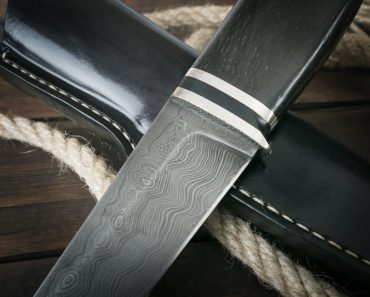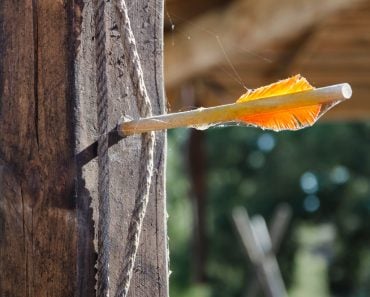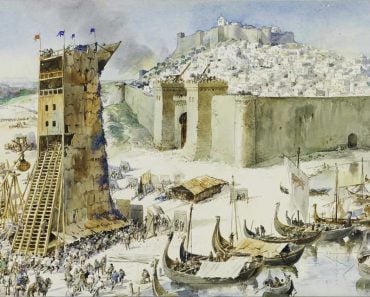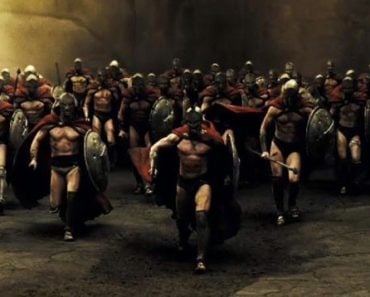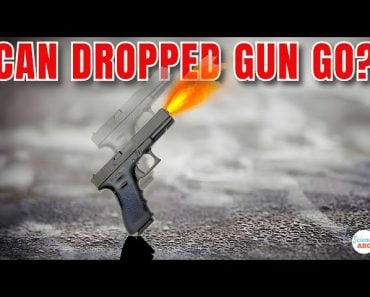The curved sword is more popular in Eastern cultures, while the straight sword is more popular in Western cultures. The curved sword is better for hacking down multiple enemies quickly, while the straight sword is better for one-on-one battles. However, the final verdict on which one is better is still up for debate.
Swords are an integral part of the historical analysis of ancient and medieval warfare. They continue to intrigue us even though most battles today lack swords entirely.
In this article, from the European broadsword to the Japanese katana – we still study them, compare their advantages and disadvantages and fantasize about imaginary battles between two skilled sword fighters using different swords.
Recommended Video for you:
Straight From The West, Curved From The East!
One of the longest-running arguments among sword enthusiasts revolves around the two dominant shapes of swords: curved and straight.
Traditionally, straight swords have been used by Western European cultures, while curved swords are known for being more Eastern, particularly Middle Eastern scimitars and the Indian Talwar.
No Clear Winner
Medieval history suggests that there has been no superior civilization between the West and the East. It all depends on which era you were living in. However, these powerful cultures preferred one type of sword over the other.
Why would that be the case if they weren’t absolutely sure that their swords were better than the swords of their enemies?
The answer to this question is that the clear demarcation between straight and curved swords mirroring the cultural difference between the West and the East is a falsity.
There were plenty of straight swords in Eastern cultures and curved ones in the West. An Indian sword, the Khanda, was famously straight, as was the Turkish Y’tanga. Similarly, there are many examples of curved swords in Europe, such as the Szabla and the Flacion.
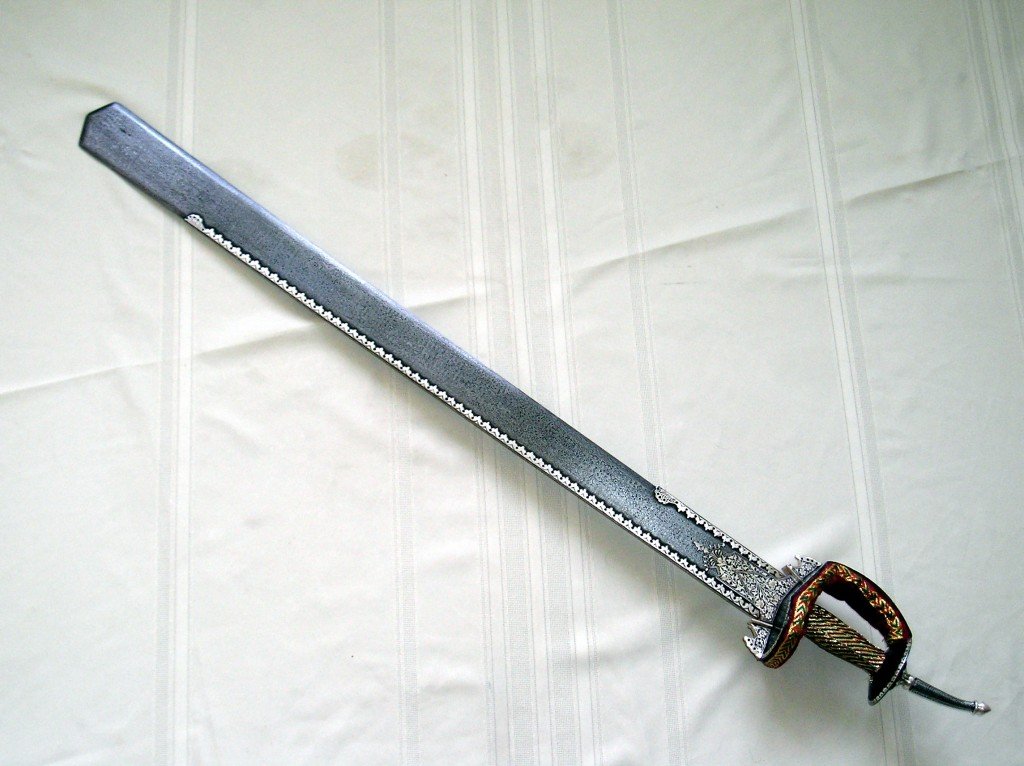
However, Eastern cultures indeed loved curved blades far more than their European counterparts. One of the main reasons for this is the prevalent landscape and fauna of the region.
Why Eastern Cultures Preferred Curved Sword?
Curved blades became so popular in Eastern cultures simply because the Middle East, Central Asia, and India were famous for their wide expanses of land, which were ideal for cavalry charges.
Remember how Genghis Khan conquered most of Asia on the strength of his cavalry alone? The Mongols also achieved this feat with the assistance of their awesome curved scimitars.
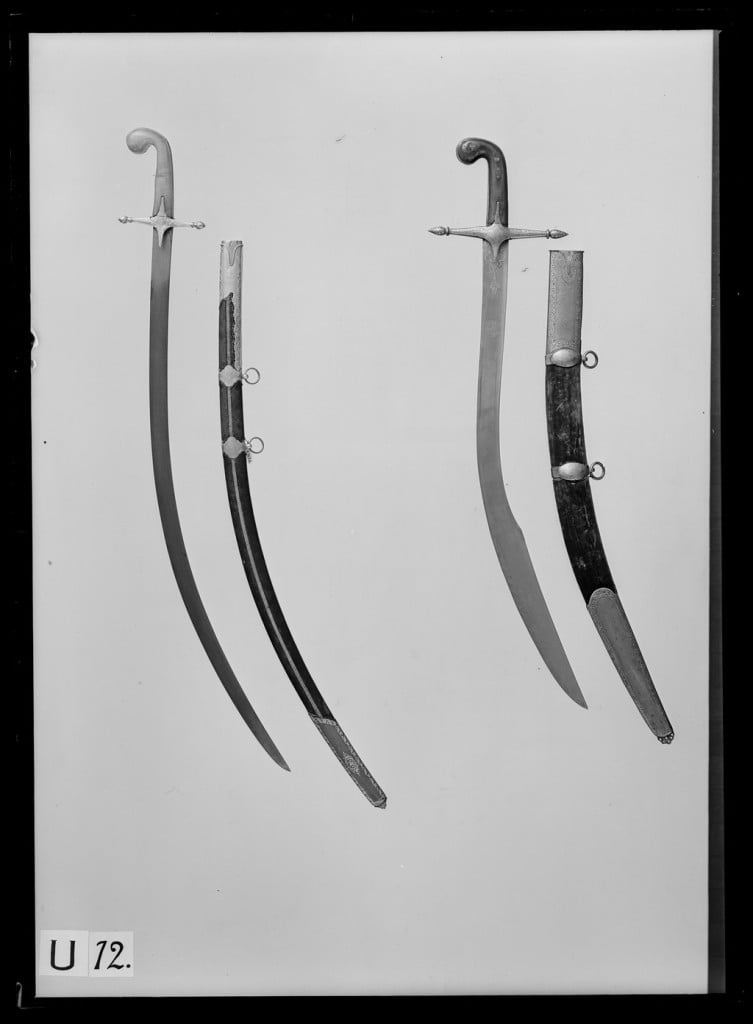
Historically, men on horseback found it easier to use a curved sword than a straight sword because the blade’s curve matches the arc of the rider’s arm as they slash at their target while galloping.
Cavalry
Arguments supporting a curved sword’s superiority always mention how a curved blade cuts much more effectively than a straight sword, but this is not necessarily true. The curvature does not help to cut ‘better,’ per se, but it does complete the job more efficiently.
Give a single curved sword to a man on horseback facing hundreds of infantry soldiers, and perhaps you’ll see the carnage he can enact on the battlefield.
On the other hand, a straight sword might cut just as well, but it would require a lot more training and focus for a soldier to wield it properly. Its weight wouldn’t seem as balanced from the top of a galloping horse.
Also, considering the momentum you will possess on horseback, there is a good chance of losing your sword because it got stuck in one of your victims. This wouldn’t be an issue with a curved sword.
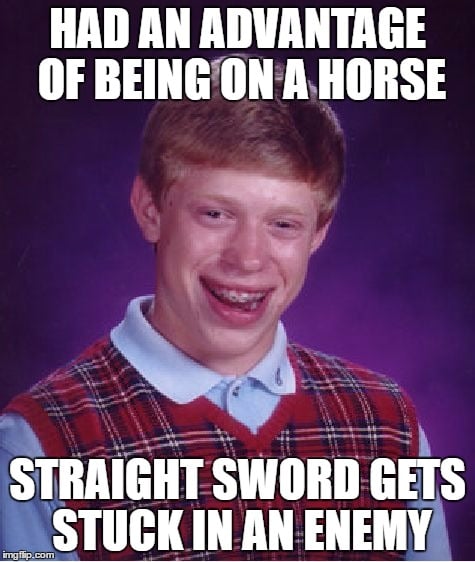
Archery
Eastern armies were huge, especially during ancient and early medieval times. Equipping each man with a sword would have been costly for the constantly squabbling Oriental kingdoms. Most of the armies were actually comprised of archers who kept a fair distance from the heat of the battle.
However, the archers were forced to draw their swords and attack their enemies head-on in the middle or near the end of most battles. This was often a desperate move on the part of the losing side. At that point, when enemies surrounded an inexperienced swordsman, the only way to escape was the flexibility and speed of curved swords.
When Is Curved Sword Better?
Curved swords are easier to draw from the sheath than a straight blade. They should also be your go-to choice if you must quickly hack down multiple enemies. Curved swords have more cutting area than straight ones, as they have a better angle of attack. Wielding a curved blade requires less training than a straight sword.
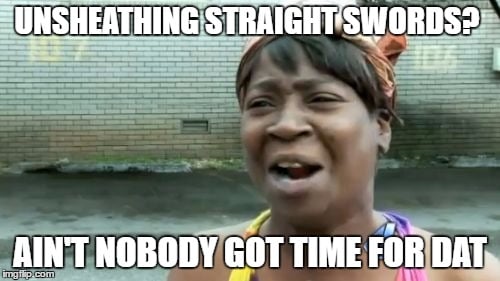
When Is Straight Sword Better?
When it comes to one-on-one battles, the straight sword is more effective. This is why straight swords were more commonly used in older European armies. These armies were generally smaller, and the populations in that part of the world were not as large as in the big Eastern civilizations. Therefore, their infantry focused on training each soldier in the arts of warfare rather than simply increasing the size of their armies.
A straight sword is more effective for thrusting and delivering singular blows to finish off an enemy. A curved sword would struggle to cause damage if the soldier wore chain-mail armor, a common type in Western cultures. A skilled swordsman using a straight sword could expertly defeat this armor by selectively targeting the weak spots visible in the pattern.
Similarly, a straight sword is better if you have to block an attack.
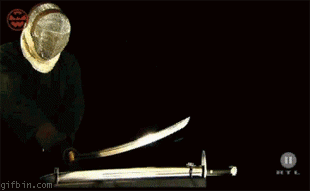
Although these are the basic points regarding the differences between the two types of swords and the preferences of their wielders, the final verdict of which is “better” is definitely not in. This debate is as heated as ever, with no obvious answer on the horizon. Sword connoisseurs just can’t seem to agree about anything!
Last Updated By: Ashish Tiwari
References (click to expand)
- Baiyr-ool, V. O., Dedkova, K. N., & Tikhonova, E. V. (2013). COMPARATIVE CHARACTERISTICS OF JAPANESE AND EUROPEAN SWORDS.
- Gordon, D. H. (1953, June). Swords, Rapiers and Horse-riders. Antiquity. Cambridge University Press (CUP).
- Brief History of Samurai.
- Swords.
- Wadsworth, J. (2015, January). Archeometallurgy related to swords. Materials Characterization. Elsevier BV.
- SUGATA : Changes In Blade Shape Over Time.

